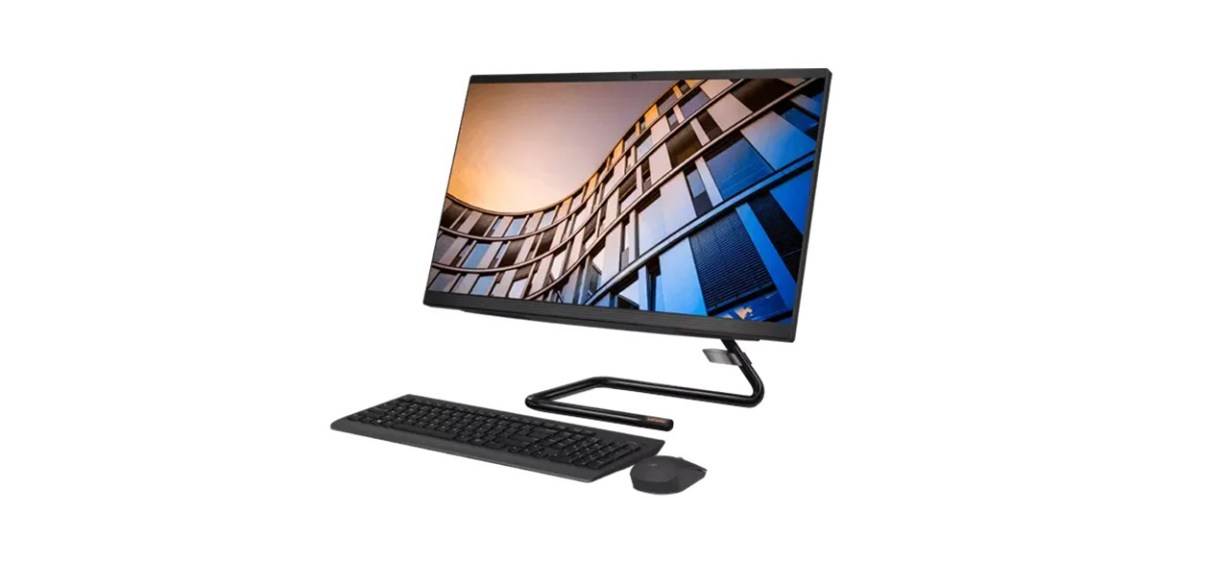Which Lenovo desktop computers are best?
Buying a prebuilt desktop computer is an especially convenient way to get your hands on a capable PC. Unlike building your own computer, though, you don’t always know what components are inside a prebuilt PC or if they’re reliable.
The best way to mitigate this unknown risk is to go for a quality prebuilt desktop PC from a reliable manufacturer. Few manufacturers on the market have more extensive reputations than Lenovo. Equipped with a variety of premium components, the Lenovo Legion Tower 7i is their most powerful offering.
What to know before you buy a Lenovo desktop computer
How much processing power you need
Different people use computers for wildly different things. If all you plan to do is check email and browse social media, there’s no need to spend a lot on fancy hardware. In fact, while the field of personal computing is constantly advancing with new and exciting hardware and software developments, anybody who doesn’t play resource-intensive games really doesn’t need the latest hardware at all.
Of course, if you are an avid gamer, you’re probably already aware that top-of-the-line hardware is available only at top dollar. But for everyday use, most people will be satisfied with something affordable, even if the processor and other internal components are a couple of years old.
How much space you have for it
If you don’t have a ton of space but need something for general use, it’s worth considering an all-in-one desktop computer, possibly one with a touch screen. AIO desktop PCs build the components directly into the monitor, which leads to a fully functional computer that takes up remarkably little desk space.
Alternatively, maybe you’re building a custom home theater, in which case a small form factor PC is the order of the day. These tiny devices can be just a couple of inches thick or less while still offering all the storage and processing power needed for common tasks.
In either case, it’s important to keep in mind that the smaller a prebuilt PC is, the more constrained its hardware will be, generally speaking. This is due to both the size of the components themselves as well as the ability (or lack thereof) of a compact PC to exhaust excess heat, which can lead to thermal throttling.
What to look for in a quality Lenovo desktop computer
Central processor performance
Not everybody needs the latest high-end 16-core gaming CPU, but everybody should still pay at least a little attention to the CPU offered by a prebuilt computer. A quad-core CPU from a relatively recent family is recommended for smooth operation, and if you plan on multitasking a lot, six or eight cores can make a difference.
Internal storage space and drive type
Most consumers should avoid desktop PCs that don’t have solid-state drives. Traditional magnetic hard drives have their uses — for example, recording always-on security cameras or providing large amounts of file backup storage — but the performance gap between SSDs and hard drives is huge when it comes to even relatively mundane activities.
With a solid-state drive, your PC will boot significantly faster, programs will load remarkably quicker, files will copy much more rapidly, and the list goes on. If you’re on a budget but have lots of things to store, it’s recommended to use a midsized SSD as your system drive and add a large and relatively affordable hard drive for the bigger stuff that doesn’t need the high performance.
As far as storage capacity goes, don’t fall for Microsoft’s claim that 64GB is sufficient for a Windows 10 system drive. It’s highly recommended that you install Windows to an SSD no smaller than 128GB.
System memory
RAM is an extremely important part of any computer. The more processes a system runs at once, the more system memory you’ll need to prevent major slowdowns. Microsoft says that 2GB is the minimum amount of RAM needed to run Windows 10, but you will not have a pleasant experience trying to do anything in Windows with just 2GB of RAM. Even 4GB is pushing the limits.
For most users, 8GB of RAM should suffice for everyday tasks. If you want to ensure smooth operation despite dozens of open browser tabs or if you like to play video games, 16GB is the way to go. Only dedicated enthusiasts or those working with heavily resource-intensive software will need more than 16GB in the near future.
How much you can expect to spend on a Lenovo desktop computer
The most affordable Lenovo desktop PCs start around $500, while their premium gaming rigs can cost upward of $2,000 if you’re looking for top-of-the-line components.
Lenovo desktop computer FAQ
Do I need a discrete graphics card?
A. Most people will only need a powerful GPU if they’re going to play advanced 3D video games. Finding a premium GPU is easier said than done these days — and it will probably remain a tough prospect for at least several more months — but rest assured that there are graphics cards out there, and Lenovo’s prebuilt PCs are offered with some capable Nvidia RTX cards.
Should I pay extra for the Pro version of Windows?
A. If you have to ask, the answer is almost certainly no. Pro versions of Windows are intended for, well, professional use and the average home user will never need or use any of the features Windows Pro offers over Windows Home. If you do need the Pro version of Windows for your job, your company will surely let you know.
What are the best Lenovo desktop computers to buy?
Top Lenovo desktop computer
What you need to know: This fully equipped gaming PC can run the latest AAA titles at high resolutions and frame rates.
What you’ll love: Outfitted with a high-end Intel Core CPU and Nvidia RTX GPU, this is Lenovo’s flagship gaming PC. The motherboard inside supports high-speed RAM and both memory and CPU overclocking, making the 7i a great choice for enthusiasts. It even comes with an optional RGB liquid cooling setup.
What you should consider: It’s relatively expensive and wholly unnecessary if you’re not playing premium games or doing other highly resource-intensive tasks.
Where to buy: Sold by Lenovo and Amazon
Top Lenovo desktop computer for the money
What you need to know: It’s one of the most streamlined all-in-one computers on the market and great for everyday use.
What you’ll love: This isn’t the absolute least expensive offering from Lenovo, but given the fact that the PC is built into the display, it offers plenty of bang for the buck while taking up very little space. The screen measures 24 inches and has a remarkably thin bezel, while the computer is offered with an optional touch screen as well as either an Intel or AMD CPU. With plenty of RAM and solid-state storage, it’s suitable for a wide range of uses.
What you should consider: As it lacks a discrete graphics card, it won’t be able to run resource-intensive games.
Where to buy: Sold by Lenovo and Amazon
Worth checking out
What you need to know: There aren’t many full-featured Windows PCs as small as this one.
What you’ll love: Less than 2 inches thick and under 4 pounds, it’s as small and light as a desktop PC comes. For this reason, it’s ideal for use as a Windows-based home theater PC or as a work computer, as long as that work doesn’t involve any heavy lifting like video editing. It has reasonably capable hardware inside plus plenty of USB ports for connecting peripherals. To top it all off, it’s not incredibly expensive.
What you should consider: Due to its size and somewhat restricted hardware, you’ll probably experience some slowdowns if you ask it to do too much. Therefore, it’s not great for heavy multitasking or gaming.
Where to buy: Sold by Lenovo
Want to shop the best products at the best prices? Check out Daily Deals from BestReviews.
Sign up here to receive the BestReviews weekly newsletter for useful advice on new products and noteworthy deals.
Chris Thomas writes for BestReviews. BestReviews has helped millions of consumers simplify their purchasing decisions, saving them time and money.
Copyright 2022 BestReviews, a Nexstar company. All rights reserved.






